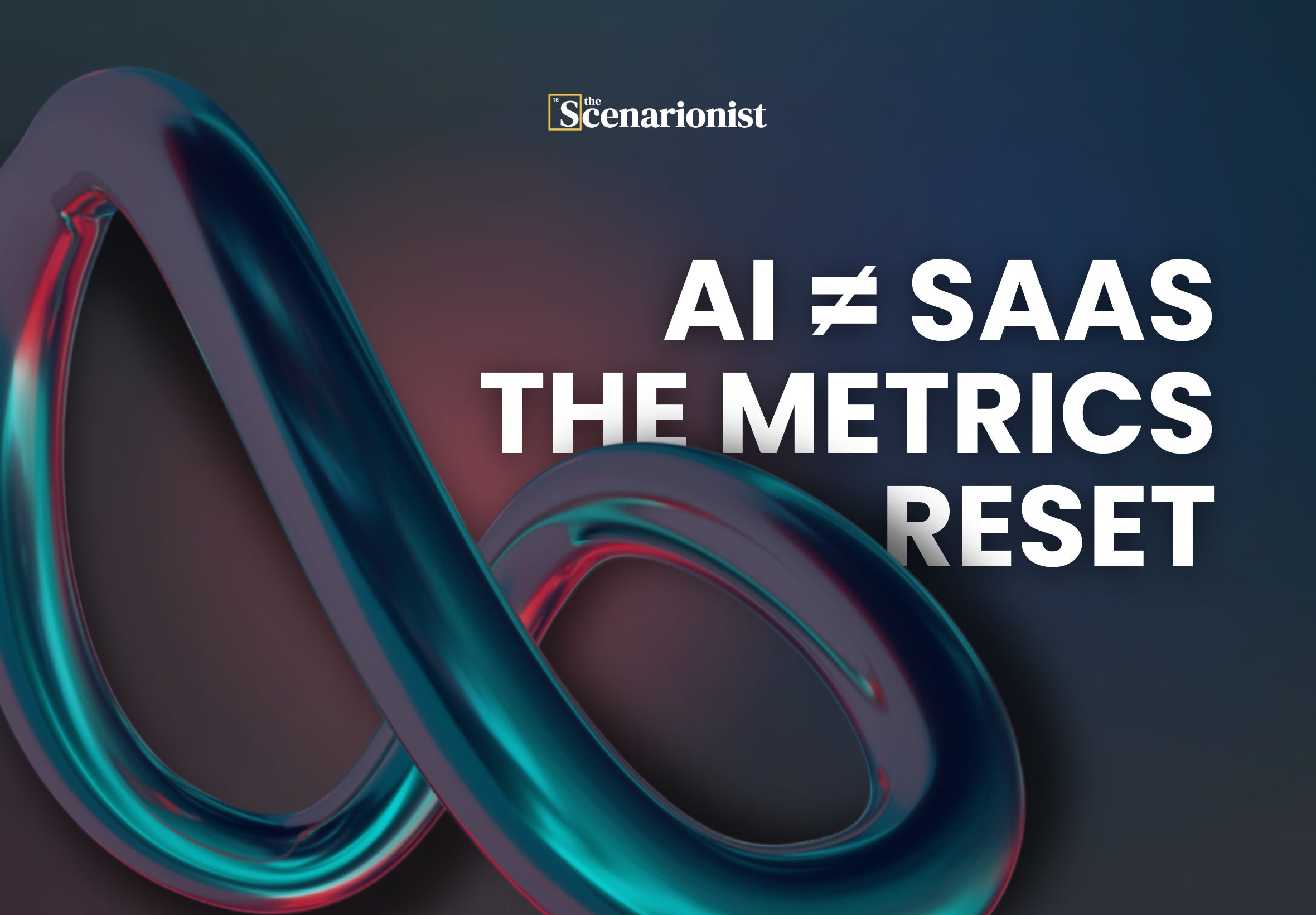AI ≠ SaaS: the Metrics Reset.
Why Continuous Calibration/Continuous Development (CC/CD) Redefines Scalability and Risk in AI Startups.
In a market that even Sam Altman describes as euphoric—bordering on a bubble—and where a recent MIT study reports that 95% of GenAI pilots fail, the competitive edge is not the model itself but the ability to continuously recalibrate trust and control.
It’s getting harder to tell signal from shimmer. The past two years gave us the most intoxicating demos in tech since the iPhone keynote, and valuations followed—anchored less to cash flows than to the promise that “this time is different.”
Even Sam Altman now describes the moment as a bubble, the kind where “smart people get over-excited around a kernel of truth.”
That’s not an apocalypse forecast; it’s a weather report about expectations. The market is pricing perfection; the operations are still learning to crawl.
The scoreboard is mixed. Nvidia has become the macro proxy for AI belief, and each earnings print is treated like a referendum on whether the capex supercycle is justified. Coverage from AP and Reuters frames the stakes plainly: record revenue growth on one side, an undercurrent of doubt on the other—are trillion-dollar AI bets producing enterprise returns yet?
On the ground, a widely circulated MIT finding poured cold water on exuberance: roughly 95% of enterprise GenAI pilots haven’t moved the P&L. You can debate the methodology (pilot scope, time horizons, accounting for second-order effects), but the directional story aligns with what operators whisper: proof-of-concepts are easy; production is a grind. The Guardian’s synthesis captured the mood swing neatly—caution from model providers, skittish investors, and enterprises stuck in the trough between demo and durable impact.
Modern AI products are non-deterministic: the same input doesn’t always yield the same output, and that variance grows with scale as you encounter new data, new adversaries, and new edge cases.
A classic SaaS mental model—ship features, harvest ARR—tends to misread scalability and risk in AI, precisely because “AI products are inherently non-deterministic, and you need to constantly negotiate the tradeoff between agency and control” (Lenny Rachitsky, X)
In that light, the focus shifts from pushing features to stewarding behavior—from assuming stability to proving reliability, again and again.
This essay takes that lens and looks at the Continuous Calibration / Continuous Development (CC/CD) framework and how it reshapes—indeed, redefines—the metrics and economics of scalability and risk in AI startups.
✨ Table of Contents:
What CC/CD is (and isn’t)
AI ≠ SaaS: the metric reset
From theory to production: you don’t scale a model—you scale a calibration process
Trust as an economic metric
What changes in the notion of scalability
What changes in the notion of risk
Conclusion: the speed that counts
✨ This Essay is Reserved for Our Premium Members
To read it, unlock The Scenarionist Premium today.
Becoming a Premium Member of The Scenarionist means you also get full access to our complete archive of Deep Tech intelligence, actionable Playbooks, rigorous VC Guides, and founder-ready strategies you won’t find anywhere else — all based on our independent research, original deep dives, and exclusive insights with the world’s top Deep Tech experts.
If you’re serious about Deep Tech and want a real edge in practical knowledge and strategic thinking, The Scenarionist Premium is the one resource you can’t afford to miss.
👉 Join The Scenarionist Premium today — and level up your Deep Tech advantage!



